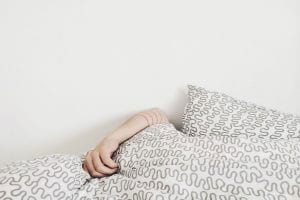When Jonathon Hume went to a general practitioner in college with his symptoms: feeling lethargic and extremely sleepy throughout the day, missing classes, and even sleeping through exams, he was told his symptoms were just a result of the typical life of a student who parties. Hume had been struggling with having trouble sleeping since he was in grade school.
His condition grew worse during high school, when at age 16, his grades took a major plummet Because he could not wake up for his classes and fell asleep in school.
It was not until he was working on his Masters degree and finally went to a doctor who specialized in jetlag, that Hume finally got the answers and diagnosis he had been searching for 22 years. After tracking his sleep times, he was diagnosed with non 24 sleep-wake disorder, also called non-24.
Non-24 sleep-wake disorder occurs from a circadian rhythm disorder. A person with non-24 has a biological clock that does not line up with the 24 hours in a day. Interestingly enough, the human bodies clock is slightly longer than 24 hours but the daytime and nighttime changes in light can stimulate hormones that release and reset our body to be in tune and adapted to the 24 hour clock. Non-24 mostly affects those who are totally blind. This is because these individuals cannot sense the light changes that help a person’s natural body clock.
There is a small percentage of people who are not blind who have non 24: like Jonathon Hume.
Non-24 individuals are very tired during the daytime and alert at night. They endure sleep deprivation and can have reduced energy as well. Non-24 can also be hard to diagnose because physicians may not know much about it and it is sometimes seen as a symptoms of depression.
Non-24 can be very disrupting to many parts of a person’s life including their health and social life as well as career and economic lifestyle.
Those with non-24 may have trouble maintaining a social life since they are often tired and sleepy during the day. It can be hard for them to maintain a job since a 9-5 career path is the standard and they suffer with extreme sleepiness during the day.
Also, their disorder may not be recognized or accepted by many, including friends and family, who may hurtfully categorize them as lazy.
Treatment options
The interesting thing about seeking treatment for non-24 disorder is that denying the body’s natural circadian rhythm can actually cause diseases such as cancer, diabetes, and heart disease. So the decision to treat non-24 is not one that should be taken lightly, as treating their disease can potentially both cause other health problems. However, because of the many negative effects and disadvantages of having non-24 many people do choose to treat it.
3 main treatment options:
Phototherapy: This method involves delivering light to a person at the same time every day right when they wake up to resent the body’s clock. This is not an effective form of treatment for those that are completely blind.
Hetlioz: This medicine was approved in 2014 by the FDA. It is considered an orphan drug that targets the melatonin receptor which controls the sleep-wake cycle. This medicine is taken every night routinely to adjust the sleep cycle.
Side effects: Hetlioz can cause headaches, bad sleep, nightmares, and drowsiness. In addition, because Hetlioz is fairly new, the long term side effects have not been assessed yet. Many people will take a chance with these risks and side effects to participate in the normal 9-5 lifestyle. Treatment is also expensive with Hetlioz costing over $9,000 a month!
Melatonin: Melatonin is a hormone that naturally helps us sleep and controls the sleep wake cycle. Non-24 patients can be given this to regulate their sleep cycle. This type of treatment is not as specific or effective as using Hetlioz.
With a correct diagnosis and a personalized treatment plan, it is possible to overcome some of the obstacles of having non-24 disorder. Jonathon Hume, mentioned earlier, found that having a diagnosis helped him better understand what he was going through and he is now able to better manage his disorder and lead a more productive life.
Read original article here.








